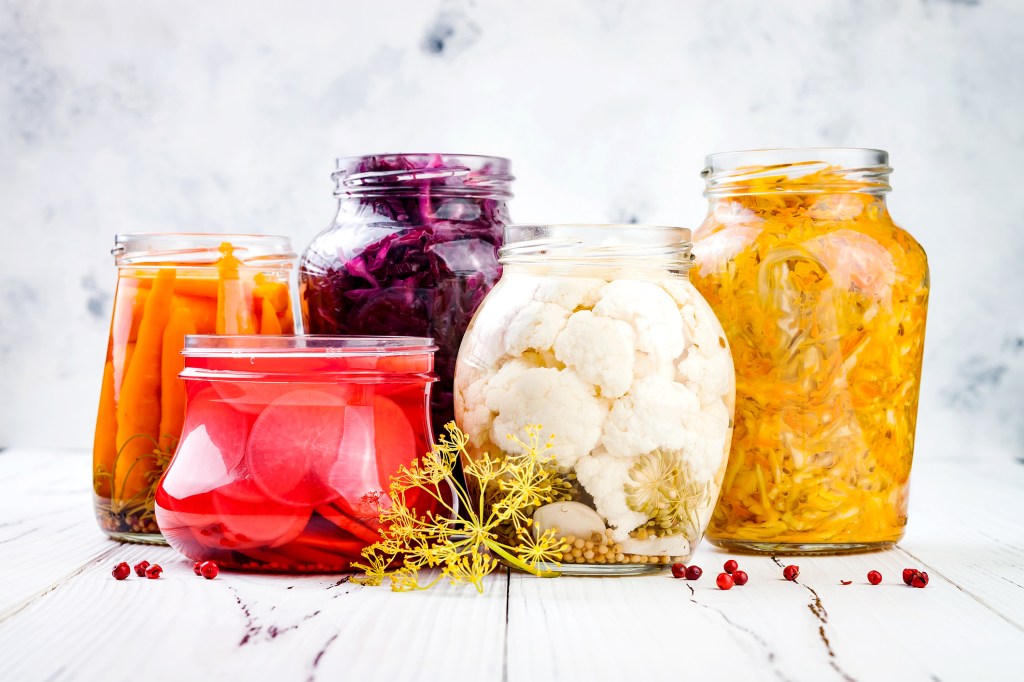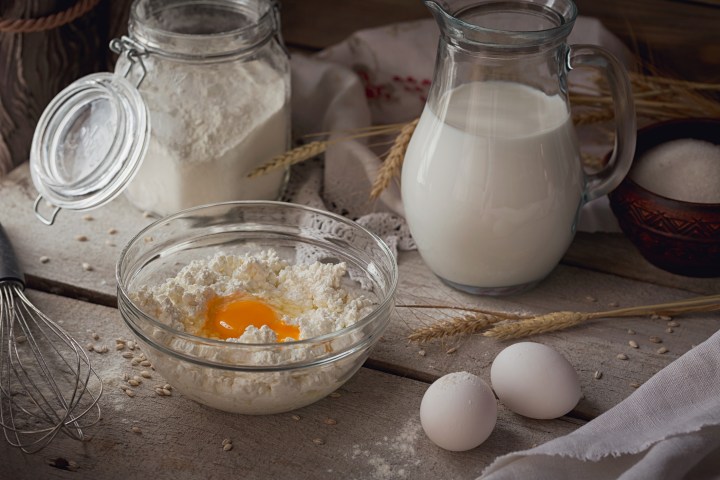Fermenting food for healthy eating

The earliest records suggest that humans have been fermenting food for around 8,000 years. Discover the health benefits of this ancient method of preserving food, and try a simple, step by step Sauerkraut recipe.
Fermenting food: an introduction
While it may be considered the latest trend, fermentation as a way of preserving food dates back thousands of years and across the globe. Most countries have fermented foods in their culinary heritage, from sauerkraut in Germany to kimchi in Korea. People have fermented foods not just as a way to preserve them, but also for their nutritional and therapeutic value. The earliest records show evidence of this as far back as 6000 BC, and links between fermented food and health benefits were well documented in Ancient Rome.
Much later, in the nineteenth century, the research of Nobel Prizewinning microbiologist, Dr Élie Metchnikoff showed that beneficial bacteria could improve immunity; he also believed they helped slow down ageing. He named the yogurt-making bacteria Lactobacillus bulgaricus after the long-lived Bulgarian country people he studied. While his claims of longevity have never been proven, there is an increasing amount of evidence to indicate that gut bacteria play a vital role in immunity and that fermented food contributes to a healthy diet.
What is fermentation?
There are many ways to preserve food. Most methods work by either destroying microbes or by preventing them from multiplying by depriving them of warmth or moisture or other conditions they need in order to thrive. Freezing, canning, drying, packing in salt, sugar, alcohol or vinegar are some of the ways we can preserve, i.e. prolong the keeping qualities of food.
Fermentation is one of the earliest and most traditional ways of preserving and the only one that actually increases a food’s nutritional value. It works by preventing undesirable microbes from multiplying, by increasing the number of beneficial microbes: these are called probiotics, a word which literally means ‘for life’. During fermentation, micro-organisms (bacteria and some beneficial yeasts) convert the sugar and starch in food into lactic acid in a process known as lacto-fermentation (carbon dioxide gas is a byproduct of fermentation). It is the lactic acid that gives fermented foods and drinks their distinctive, slightly sour flavours.
How fermented foods support good health
Many methods of preservation have a negative impact on the nutritional value of the food. At best they retain most of the nutrients of fresh food; at worst they may contain artificial chemicals or additives such as sugar that are detrimental to health. Fermentation is the only preservation method that actually improves the nutritional content of food as well as having numerous other health benefits.
- Makes food more digestible The bacteria that live in our gut are essential: they help with the digestion, absorption and assimilation of nutrients, so it’s important to maintain a good balance of bacteria. Fermented food is easier to digest than non-fermented, as some of the sugars and starches in food are broken down during fermentation. In fermented drinks such as yogurt and kefir, most of the lactose is converted to simpler sugars, glucose and galactose, which break down further into lactic acid. Those who are only mildly lactose-intolerant are usually able to enjoy these foods.
- Eliminates anti-nutrients Compounds that interfere with the absorption of nutrients are known as anti-nutrients and these are destroyed by fermentation. Phytic acid, for example, is found in many legumes and grains and some vegetables; it reduces the absorption of valuable vitamins and minerals such as niacin, calcium, iron and zinc. Fermenting food will neutralise much of the phytic acid. Miso and tempeh are examples of fermented legumes.
- Increases vitamins and minerals Fermentation increases the availability of many vitamins and minerals, particularly the B-group vitamins, as well as vitamins C, A and K.
- Strengthens immunity Fermented food and drinks repopulate your gut with friendly bacteria and restore balance in the gut, where a large proportion of the immune system is housed. These beneficial bacteria crowd out pathogenic bacteria and yeasts such as candida and provide health-supporting probiotics to make your immune system more robust. They also support the mucosa (gut lining) as a natural barrier, strengthening immunity.
- Improves mood The brain and gut are linked through the hypothalamic-pituitary-adrenal (HPA) axis and the gut is lined with neurons that can influence our emotions – hence the expression ‘gut feelings’. Serotonin, which is involved in mood, is made in the gut and research suggests that healthy gut bacteria are linked to improved mood.
Simple Sauerkraut, step by step
Sauerkraut, which means ‘sour cabbage’, is an everyday food in many parts of Eastern Europe. While it is sometimes flavoured with aromatic spices such as caraway seeds and peppercorns, in its basic form it contains only two ingredients: cabbage and salt. It can be eaten after just five days, when it is still crunchy and just slightly sour, or left until it has a comfortingly soft texture and a more pronounced acidity, perfect for serving with rich meats and strongly flavoured cheeses.
Ingredients
- 1 firm pale green or white cabbage, weighing about 900g (2lb)
- 20g (¾oz) coarse crystal sea salt or flakes
Makes about 500g (just over 1lb)
Method
- Remove the outer two or three leaves from the cabbage and discard (or use in another recipe). Cut the cabbage into quarters and remove some of the tough central core. Shred the cabbage very finely, either by hand with a large sharp knife or in a food processor, using a slicing disc. Layer the cabbage and salt in a very clean bowl (rinse out the bowl – make sure it’s heatproof – with boiling water from the kettle first to kill any undesirable bacteria), then using clean hands firmly massage the cabbage for 5 minutes. The cabbage will feel tough and squeaky at first, but will gradually soften and start to ooze juices.
- Leave for 5 minutes so that the salt can draw out a little more liquid and soften the cabbage, then massage again for 3–4 minutes; you should now have a much-reduced volume of cabbage in its own briny juices.
- If you don’t have any specialist fermenting bottles with airlocks, cover the surface of the cabbage entirely with a sheet of cling film, pressing out any air bubbles. Weigh down the cabbage so that it sits beneath the brine, using a plate which just fits inside the bowl and a couple of weights or small food tins.Cover the top of the bowl with more cling film and leave at cool room temperature, about 18°C (64°F). (Some preserves are better fermented more quickly at a slightly higher temperature, but cabbage on its own benefits from a slow ferment.)
- If you are not using fermenting bottles with airlocks, check the cabbage every day or so and release any gas bubbles that have built up under the cling film. Push the bubbles to the sides of the cling film, then lift up the edges to release them; try not to open up completely to the air. However, if there is any scum on top, peel the cling film back and remove with a spoon (first rinsed under boiling water). Try to keep the fermenting sauerkraut at an even temperature – too warm and it may become mouldy; too cool and it will take a long time to ferment.
- If you prefer, you can spoon the massaged cabbage straight away into a sterilised 1 litre (1¾pint) jar, leaving a 5cm (2in) fermenting space at the top of the jar. The cabbage should have produced enough brine of its own; if not, add enough brine (page 10) to ensure the cabbage is completely submerged. Use the base of a small clean glass to pack the mixture down one last time. Put on the lid, close firmly, and then loosen by a quarter turn. Leave the jars at room temperature out of direct sunlight for 7 days.After day 3, ‘burp’ the jar each day by unscrewing the lid, closing firmly, then loosening by a quarter turn.
- The cabbage will be ready to eat or you can leave it to ferment for longer, up to 4 weeks, or until the bubbling subsides. Taste the sauerkraut after 6–7 days, then every couple of days until it is to your liking. If you have made the sauerkraut in a bowl, transfer to sterilised jars and store in the fridge for up to 4 months.
Note
It’s important to keep the cabbage completely covered with brine. If you don’t have pickle weights or a suitable plate or saucer, use the outer cabbage leaves you removed, roll up and use to wedge the sauerkraut down. Discard these when the sauerkraut has finished fermenting and before you put it in the fridge.
This article is extracted from Fermenting Food For Healthy Eating by Catherine Atkinson.







